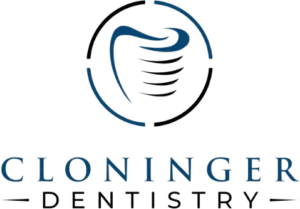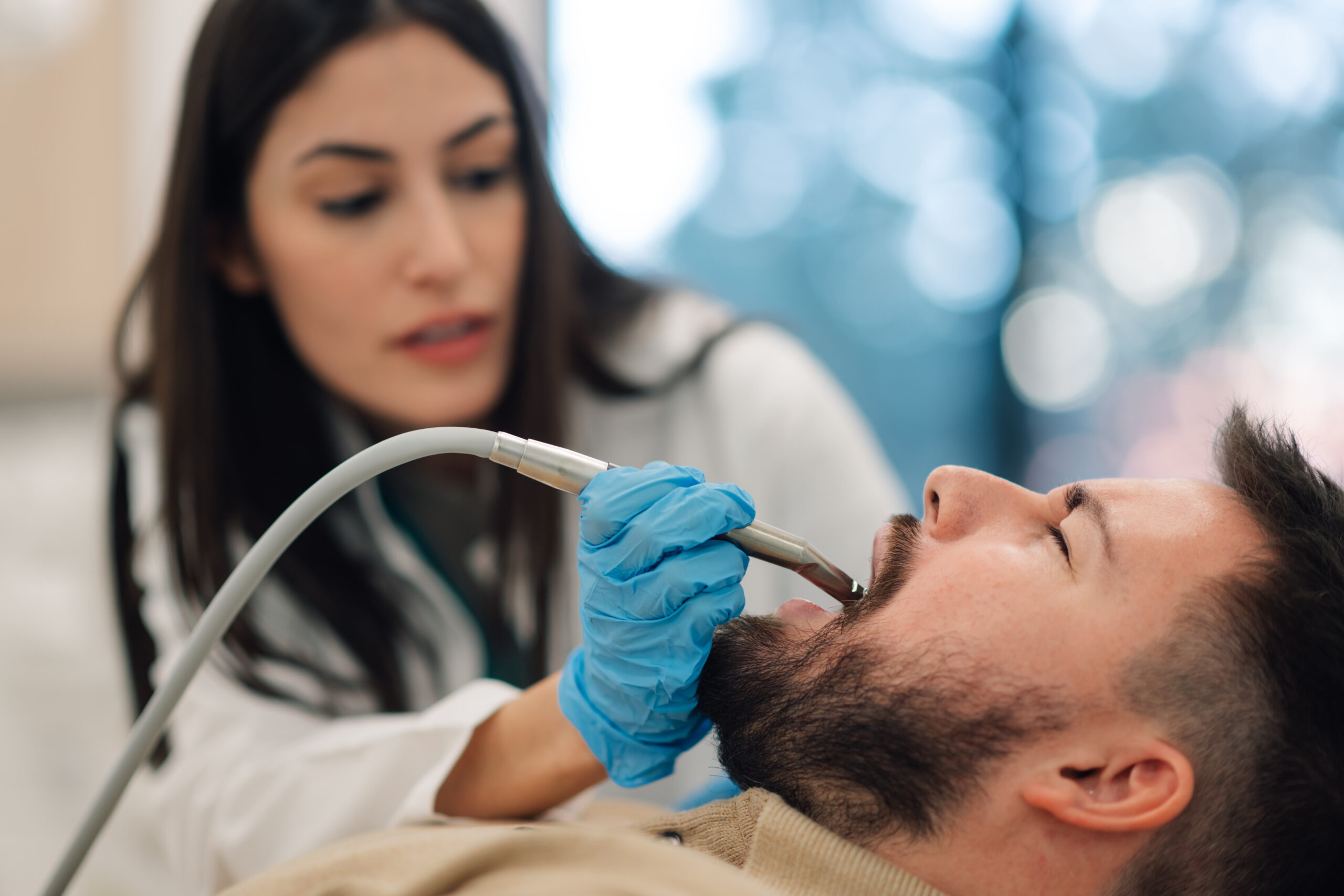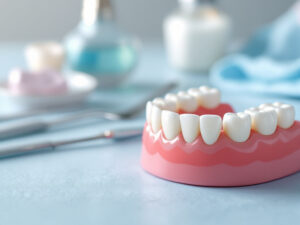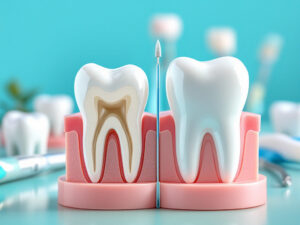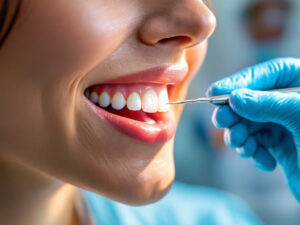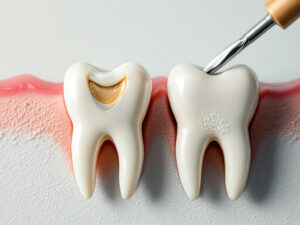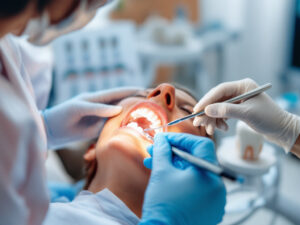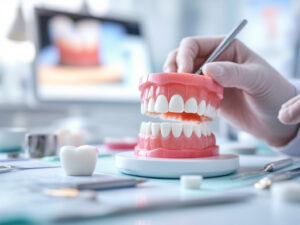Explore nitrous oxide sedation
If you have ever felt uneasy or anxious about dental visits, nitrous oxide sedation could be a gentle, effective solution. Also called laughing gas, nitrous oxide delivers a sense of calm throughout your procedure, often making it possible to face essential dental treatments without the lingering unease that may arise in a traditional setting. Nitrous oxide sedation has been widely used by dentists since the mid-19th century (Cleveland Clinic), and it continues to be a trusted choice for many patients seeking a smoother experience in the dental chair.
Much like any approach to patient care, sedation with nitrous oxide is more than just a technique, it is about offering a supportive environment for individuals who might otherwise avoid the dentist altogether. By promoting relaxation and significantly reducing anxiety, sedation can help you or your loved one overcome hesitations and embrace the comprehensive dental care you deserve. Whether you need routine hygiene, restorative work, or an advanced cosmetic procedure, nitrous oxide sedation can be tailored to provide the relief you need.
In this article, you will learn the basics of sedation dentistry, discover the unique advantages of nitrous oxide sedation, and understand how to prepare for and recover from your treatment. You will also get to know why Cloninger Dentistry is committed to offering a caring, empathetic atmosphere that meets your individual needs.
Understand sedation dentistry basics
Sedation dentistry utilizes various methods to help patients cope with fear, discomfort, or stress during dental procedures. Rather than viewing sedation as something restricted to complex interventions, modern dentistry often uses it for both minor and major treatments. This approach ensures that you remain as comfortable as possible, regardless of the complexity of your appointment.
Sedation types for dental care
- Nitrous oxide (laughing gas)
- Involves inhaling a colorless, odorless gas combined with oxygen.
- Helps patients feel at ease within minutes.
- Wears off quickly after the procedure ends.
- Oral sedation
- Typically involves taking a prescription pill before the appointment.
- Relieves anxiety and creates a moderate state of relaxation.
- Takes longer to wear off, requiring someone to drive you home.
- IV sedation
- Administered directly into a vein.
- Offers deeper sedation, often used for more extensive procedures or severe anxiety.
- Recovery can be longer, and driving afterward is not allowed for some hours.
- General anesthesia
- Renders a patient fully unconscious.
- Used for complex surgical procedures or extreme anxiety.
- Requires significant monitoring of breathing and heart function.
Nitrous oxide stands out for its reliability and ease of use. It is sometimes called inhalation sedation because you breathe it in through a small mask that rests comfortably over your nose. Each type of sedation aligns with different patient needs. If your anxiety is mild to moderate, nitrous oxide sedation can often provide enough calm to make your dental experience entirely manageable.
Recognize unique challenges to sedation
Many people hesitate to undergo dental procedures due to negative memories, ongoing anxiety, or concerns about pain. Others fear the loss of control that sedation might imply. It is important to acknowledge such unique challenges so you can choose the right treatment plan.
- Fear of needles or medical procedures: Some patients are apprehensive about injections or surgical tools.
- Heightened gag reflex: A sensitive gag reflex can make even simple cleanings uncomfortable.
- Past traumatic experiences: Negative experiences in a dental office can linger, creating ongoing avoidance.
- Time constraints: Lengthier procedures can be stressful, especially for those balancing tight schedules.
- Emotional triggers: Dental care often touches on personal feelings about appearance, confidence, or self-worth.
By understanding these challenges, you empower yourself to seek a more supportive environment, such as Cloninger Dentistry, where staff are trained to offer empathy, reassurance, and careful, tailored treatment programs. Nitrous oxide sedation further addresses these hurdles by gently relaxing your body and mind, eliminating or significantly reducing the anxiety that might otherwise stand in your way.
Consider benefits of laughter gas
Nitrous oxide sedation offers benefits that go beyond simply feeling relaxed. From minimal side effects to a fast return to daily activities, this method is popular for individuals who want to address anxiety head-on without enduring prolonged sedation.
Key benefits
-
Rapid onset
The effects of nitrous oxide take hold in about three to five minutes once you begin inhalation (Cleveland Clinic). This quick action helps you gain an immediate sense of comfort, letting you ease into your procedure without undue wait time. -
Quick recovery
Because nitrous oxide has a short half-life and is primarily exhaled through your lungs (Medscape), its effects subside almost immediately after your mask is removed and replaced with pure oxygen. Most people can resume normal activities and even drive themselves home shortly after their appointment concludes (Dental Sedation Services). -
Minimal lingering effects
Nitrous oxide does not typically cause significant hangover symptoms or prolonged grogginess. You may feel slightly lightheaded for a brief period, but this often passes within minutes. -
Safety profile
When administered by a trained provider, nitrous oxide sedation is widely recognized as safe and effective for a broad range of patients. It has a mild analgesic effect, minimal impact on respiration, and a track record of reliable use spanning centuries. Healthcare sources consistently highlight its safety profile, especially when combined with the proper dosage of oxygen. -
Versatility
From basic cleanings and professional teeth whitening to more extensive interventions like wisdom tooth removal, nitrous oxide sedation adapts well to various treatments. This is especially true if you or a loved one requires multiple procedures, since laughing gas spares you a lengthy recovery.
Compare sedation methods
Although nitrous oxide sedation is a preferred option for many patients, it is important to see how it stands alongside alternatives. Below is a brief comparison table highlighting some notable distinctions:
| Sedation Method | Administration | Level of Relaxation | Recovery Time | Ideal For |
|---|---|---|---|---|
| Nitrous Oxide | Inhaled through nasal mask | Mild to Moderate sedation | 5–10 minutes | Short procedures, mild anxiety |
| Oral Sedation | Prescription pill | Mild to Moderate sedation | Several hours | Moderate anxiety, simpler procedures |
| IV Sedation | Intravenous medication | Moderate to Deep sedation | Several hours | High anxiety, complex or lengthy procedures |
| General Anesthesia | Intravenous + inhalational drugs | Full unconsciousness | Up to 24 hours | Complex surgeries, severe anxiety or special needs |
Nitrous oxide sedation fits well for most low to moderate anxiety levels, while those with more severe fears or highly invasive procedures might prefer iv sedation dentistry. Ultimately, your dentist will help you choose the approach that aligns with your experience, comfort level, and individual medical factors.
Prepare for your procedure
The key to a successful sedation dentistry appointment lies in open communication and thorough preparation. Here are the essential steps you can expect:
-
Medical review
You will complete or update your medical history, including any current medications and existing health issues. Disclosing conditions such as respiratory problems or vitamin B12 deficiency is important, as they may influence sedation choices (NCBI Bookshelf). -
Discussion of sedation options
Your dentist will explain the potential sedation methods, focusing on the benefits, risks, and suitability of nitrous oxide sedation. This means you will understand how the process works, how quickly it takes effect, and what precautions to take. -
Potential pre-visit instructions
Although most patients do not need to fast before nitrous oxide sedation, your provider might offer helpful suggestions like limiting large meals before your appointment. If you are combining nitrous oxide with deeper forms of sedation, the guidelines will be more restrictive. -
Confirm your procedure plan
Once you have chosen nitrous oxide sedation or another method, your provider will walk you through the steps for your specific treatment. Whether it is a cosmetic smile makeover or a simple cleaning appointment, you will gain clarity on the timeframe, the cost, and any special considerations. -
Arrange transportation if necessary
Even though many patients can drive themselves home after nitrous oxide, it is always recommended to confirm your options with your dentist. If you anticipate needing additional sedation or worry about lingering anxiety, you may want a friend or family member to accompany you.
By following these guidelines, you will ensure a safer, more reassuring visit. Recognizing that every individual has unique challenges is all part of the tailored treatment approach at Cloninger Dentistry.
Experience sedation session
During the actual procedure, nitrous oxide sedation is relatively simple. Being prepared helps you feel at ease, and the following outline highlights what happens:
-
Mask placement
You will have a small nasal mask placed comfortably over your nose. Some offices even carry scented masks to make the experience more pleasant. -
Initial relaxation
Within a few short minutes, you will begin feeling calm and at ease. Some patients report a slight tingling sensation or gentle heaviness in their limbs. You remain awake and able to converse, but your worries usually melt away. -
Continuous monitoring
Throughout your procedure, a trained dental professional monitors your oxygen saturation, vital signs, and overall comfort. If you feel lightheaded or want adjustments in the sedation level, you can communicate this at any time. -
Completion of dental work
As the procedure progresses, the sedative effect lets you remain relaxed while your dentist addresses issues such as cavities, cosmetic enhancements, or routine cleaning. Nitrous oxide sedation is especially helpful if you have a strong gag reflex or if you have had trouble sitting still for extended periods. -
Removal of gas flow
After the dental work concludes, the team typically switches your airflow to pure oxygen. Within about five to ten minutes, the effects of nitrous oxide are mostly gone.
Thanks to its rapid onset and quick dissipation, nitrous oxide sedation makes it easier to tackle multiple concerns in one visit. If you opt for other treatments, such as porcelain veneer placement or teeth whitening treatment, you may be able to extend your session without significantly compounding stress.
Plan your aftercare
In most instances, you can resume your regular regimen almost immediately after nitrous oxide sedation. Your release of the gas is near-instant once the nasal mask is removed. This is different from deeper forms of sedation, which might leave you drowsy, groggy, or in need of extended rest.
Important aftercare tips
- Wait a few minutes before standing up if you feel lightheaded.
- Resume normal meals unless otherwise instructed.
- Engage in gentle activities at first.
- Monitor any unusual side effects like nausea or headache.
Should you experience prolonged dizziness or discomfort, consult your provider for advice. Although uncommon, these symptoms might appear if you have had a longer procedure or if your body takes extra time to adjust. Always remember, you do not have to navigate the process alone. Cloninger Dentistry is here to offer the support necessary for a swift return to your daily life.
Choose Cloninger Dentistry
As you explore whether nitrous oxide sedation is the right fit, you deserve a dental team that respects your concerns, empathizes with your experiences, and offers genuine support each step of the way. Choosing Cloninger Dentistry for your family dental care, preventative hygiene, and cosmetic dentistry needs means placing your trust in a practice that believes in delivering comprehensive care and individualized plans for every patient.
Tailored treatments
At Cloninger Dentistry, you will find that each plan is structured around your unique challenges. If you often feel anxious, sedation services—ranging from minimal nitrous oxide sedation to iv sedation dentistry—are available to create a safer and more comfortable environment. Our team discusses your medical background, your preferences, and your long-term goals to customize the appropriate approach.
Supportive environment
We believe that a supportive environment helps you feel empowered to address any obstacles in your oral health journey. Our staff is here to answer questions, calm your nerves, and provide reassurance at every turn. Beyond sedation methods, this includes trusting relationships with your dental team, who want to see you achieve a healthy smile through consistent preventative measures, like routine cleanings and thorough check-ups.
Comprehensive approach
Our practice offers a full range of services:
- Preventative care: Regular exams, cleanings, and gum health monitoring.
- Reconstruction services: Restorations for damaged or missing teeth, including implant placement service.
- Cosmetic options: Professional teeth whitening, porcelain veneer placement, and cosmetic smile makeover to enhance your smile.
- Sedation dentistry: Including sedation dentistry service, sedation for anxious patients, and iv sedation dentistry.
From addressing minor cavities to orchestrating transformative cosmetic plans, we aim to offer everything you need under one roof. That is how we create individualized solutions that serve you now and far into the future, allowing for ongoing relationships built on trust.
Empathy in every visit
Dental procedures should not be defined by dread or apprehension. By combining state-of-the-art techniques with compassionate attention to your emotional well-being, we strive to replace fear with empowerment. Whether you choose nitrous oxide sedation for a quick check-up or a more extensive sedation method for a complex restoration, your comfort remains our top priority.
Frequently asked questions
-
Will nitrous oxide sedation make me fall asleep?
Nitrous oxide typically allows you to stay awake during your dental procedure. You will be in a deeply relaxed state, so you might feel drowsy or pleasantly lightheaded, but you will still be able to respond to questions or instructions. If you prefer a deeper level of sedation that might cause you to doze off, consider discussing iv sedation dentistry with your dental team. -
Is nitrous oxide sedation safe for children?
Yes. Research consistently shows that, when administered by qualified professionals, nitrous oxide sedation is safe for children older than two years. It is one of the most frequently used sedatives in pediatric dentistry. If your young one typically becomes nervous or fearful at the dentist, this inhalation sedation can help them receive necessary care without unnecessary distress (Cleveland Clinic). -
Are there any long-term side effects?
Short-term effects such as mild dizziness, tingling, or nausea sometimes occur. However, these side effects typically wear off quickly once the gas supply is turned off. As long as you visit a reputable dental office that monitors usage and combines nitrous oxide with the right amount of oxygen, the risk of any long-term complications is very low (Healthline). -
Can I drive myself home after the procedure?
In most cases, yes. One of the advantages of nitrous oxide sedation is that it leaves your system rapidly, allowing you to regain full alertness and safely drive within minutes after treatment. However, if your procedure is extensive, or if you end up needing a stronger form of sedation, it is wise to plan for alternate transportation just in case. -
How do I know if nitrous oxide sedation is right for me?
If you have mild to moderate dental anxiety, a strong gag reflex, or are simply nervous about discomfort, nitrous oxide could be a helpful tool. Schedule a consultation with the team at Cloninger Dentistry, share your concerns, and together you can determine the most suitable sedation option. Alternatives such as oral sedation or sedation for anxious patients are always available if you need deeper relaxation.
By educating yourself on nitrous oxide sedation and the variety of dental sedation methods available, you can approach each appointment feeling more confident and in control. At Cloninger Dentistry, our mission is to guide you along a pathway of comfort and peace of mind, so your journey is not overshadowed by fear. Talk with us today about how comprehensive family and cosmetic dentistry—coupled with empathy and cutting-edge sedation techniques—can revitalize both your smile and your outlook on dental care. Our goal is to create a supportive environment and help you achieve the healthy, long-lasting results you deserve.
